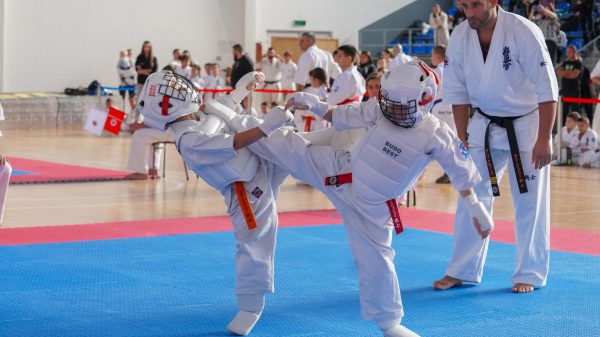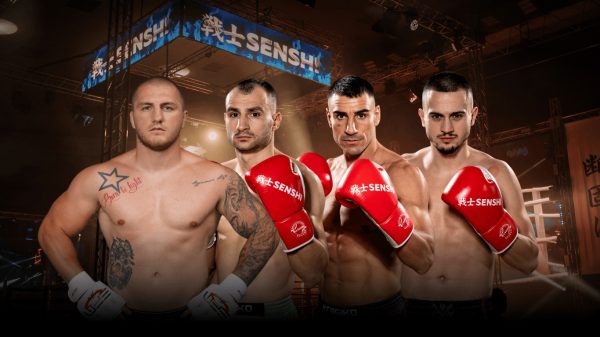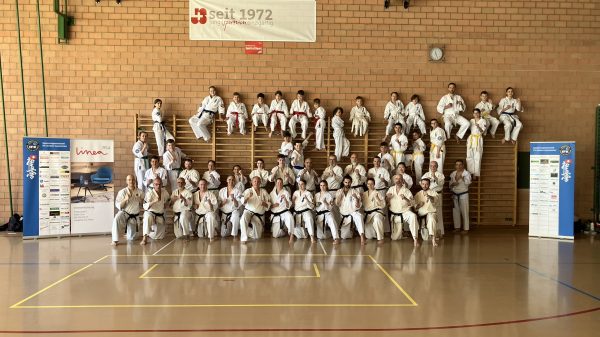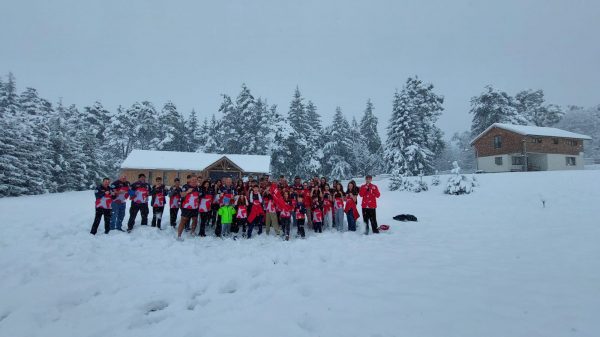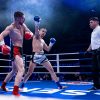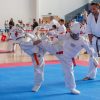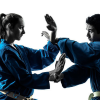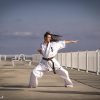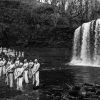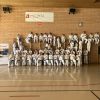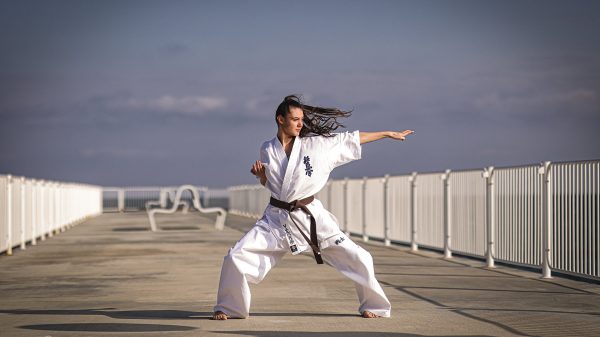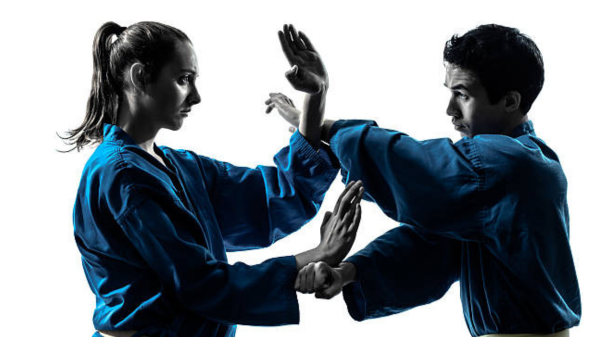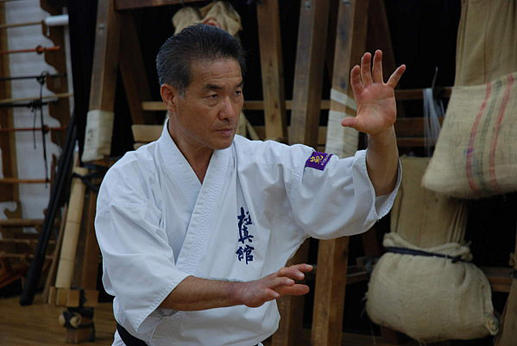 Hatsuo Royama was born in Saitama, just north of Tokyo,
Hatsuo Royama was born in Saitama, just north of Tokyo,
in 1948. Inspired by a country-wide boom in popularity of celebrity fighters and wrestlers, he traveled to Ikebukuro at the age of 15 and entered Mas Oyama’s legendary “Oyama Dojo”. There Kyokushin Karate was being born. Having trained there at the birthplace of Mas Oyama’s Kyokushin, Kancho Royama was one of a very few of Mas Oyama’s students to still be closely affiliated with Mas Oyama from so close to the beginning all the way until Mas Oyama’s death in 1994.
Kancho Royama rose to some notoriety when, at the age of 25, he became champion of Kyokushin’s 5th All Japan Tournament. Later when he defeated the American, Charles Martin, a giant who stood nearly a foot taller (about 30 cm) than himself. This was in the 1st World Open Karate Tournament in 1975.
This young prodigy of Mas Oyama then went on to a historic finish in that 1st World Open Tournament. When a split-decision was finally broken by the tournament judges in the final match and 1st place was given to Katsuaki Sato. leaving Kancho Royama with no choice but to accept 2nd place. The day following the tournament when more than a few fighters entered the hospital for injuries sustained during the competition — including Sato! — Kancho Royama attended his usual training.
No one who knows Kyokushin Karate today can hardly separate the style from its devastatingly powerful low shin kick. Not everyone knows, however, that it was Kancho Royama who made this technique famous. At the early World Tournaments the Japanese would hear the foreigners yell, “Low kick! Low kick!,” and since the pronunciation of “R” in Japanese is so similar to “L”. it was an honest mistake for them to hear “Ro kick! Ro kick!” instead, believing that even the foreigners had named this technique after the first Japanese fighter to make it famous. After all, it was with Kancho Royama that all of Japan had associated the introduction of this bone-breaking technique ever since they’d watched him break down Charles Martin in the 1st World Tournament with one devastating low shin kick after another.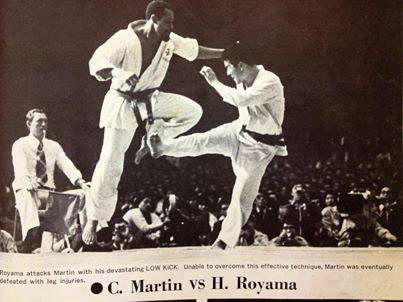
In the decade following Mas Oyama’s death, the 12 million member International Karate Organization that he built has fragmented several times into several smaller organizations. In 2002, Hatsuo Royama, one of Mas Oyama’s early students from the Oyama Dojo era, along with many of his friends and followers, split from the then largest group of Sosai’s followers, the KyokushinKAIKAN, and created a new organization called Kyokushin-KAN.
Kancho Royama had struggled for nearly a decade to support the young leader of the Kyokushinkaikan. But in the end he was finally forced to accept the fact that that organization was no longer being led in a direction that would have met with the approval of his teacher, Mas Oyama. The late karate legend, Mas Oyama, said time and time again that the most important element of Kyokushin karate was the BUDO SPIRIT which encompasses elements of proper behavior, courtesy, the spirit of Osu. And good will towards man, in addition of course to fighting prowess. In 2002, Kancho Royama realized that this all-important element of Mas Oyama’s organization had been replaced by Mas Oyama’s initial successor with a hunger for money and that the “budo spirit” had been largely replaced by the “business spirit” in the inner chambers of the Kyokushin leadership. Human relationships, friendships, and sempai-kohai (senior-junior) relationships, which Mas Oyama held as all-important, were being butchered in the name of money and a lust for power.
Additionally, Kancho Royama had been forced to face the conclusion that Kyokushin’s fighting prowess was suffering under the new leadership as well. During Mas Oyama’s lifetime there was no question in the hearts and minds of the Japanese public that Kyokushin was the world’s strongest karate. Kancho Royama and others knew that the reason that it remained so was because of the emphasis that Mas Oyama placed on the real-world application of karate techniques. Mas Oyama created a full-contact style of tournament competition in order to popularize budo karate, but never went so far as to equatethat tournament-style fighting with what he believed to the essence of budo karate.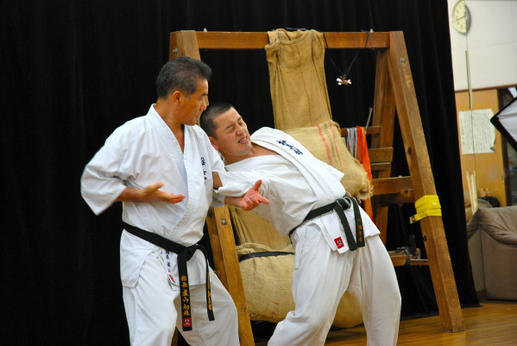
Kyokushin tournament-style fighting IS a great venue for developing the win-at-all-costs fighting spirit of the karateka, yet it remains several steps removed from real life-and-death combat for self-defense. Punches to the head, for example, were removed from Kyokushin competition in the name of the popularization of karate that Mas Oyama achieved. The reason Kyokushin fighters become the strongest under Mas Oyama’s teaching was that they trained for real-life application. And then fought in the less-dangerous by comparison tournament-style environment. By 2002, however, Shihan Royama and others had realized that the new leadership of Mas Oyama’s organization had abandoned Mas Oyama’s emphasis on real-world application. And instead lowered its standards to hold tournament-style fighting as all-important. After all, it was tournament-style fighting that generated money and fame.
Kancho Royama and other older, wiser instructors of Kyokushin karate – such as Mas Oyama uchi deshi Shihan Tsuyoshi Hiroshige. They realized that under Kyokushin’s current leadership, Kyokushin was losing its edge. After ten years of decline following Mas Oyama’s death, Kyokushin was no longer the world’s strongest karate. Shihan Royama and Shihan Hiroshige and many followers. Therefore, broke with the largest remnant of Mas Oyama’s organization, the KyokushinKAIKAN. Аnd founded the rival Kyokushin-KAN with the intention of returning Kyokushin Karate to the high level of esteem that it commanded during Mas Oyama’s lifetime.
One of Hatsuo Royama’s first steps upon forming Kyokushin-kan was the re-establishment of Mas Oyama’s Kyokushin Shogakukai foundation as prescribed in Mas Oyama’s will at the time of his death. The purpose of establishing his karate organization as a government recognized nonprofit foundation was to ensure that money and the hunger for money would never belittle the ultimate truth and lofty ideals of the Kyokushin Way. At the time of his death, Mas Oyama willed that his followers should re-establish the foundation that he’d created. And the failure on the side of the KyokushinKAIKAN’s young leadership to achieve that goal had become yet another reason why Kancho Royama and others felt compelled to break away and follow a path that their teacher. Mas Oyama, would have celebrated. This point is supported by the fact that of the surviving board members of Mas Oyama’s Kyokushin Shogakukai Foundation – a board composed of trusted advisers of Mas Oyama during his lifetime. Actually most of them have assumed their positions on the board and are supporting Kancho Royama’s Kyokushin-kan.
In the decade since Kyokushin-kan was founded, over 6000 Japanese karateka have flocked to support its cause in 50 branches composed of many dojos spread across Japan. Additionally, scores of overseas branches have formally been established, including Russia, South Africa, Korea, nearly every European country, the United States and others. For a decade now already Kyokushin-kan has sponsored annual all-Japan and all-Japan weight category tournaments held in Saitama, and all Kyokushin-kan members eagerly celebrated Kyokushin-kan’s 1st World Open Karate Tournament. Tournament was held in Moscow in September, 2005.


